12V, 100mA Step-Down Voltage Regulator D45V1E1F12
Available with a lead time
Expect dispatch between May 19 and May 21
Quantity Discounts:
- 10+ $8.51 (exc GST)
- 25+ $8.25 (exc GST)
The D45V1Ex line of synchronous buck (step-down) voltage regulators generate lower voltages from input voltages as high as 65 V while delivering up to 100 mA continuous. They are switching regulators with very low quiescent currents (< 30 µA typical), which allows for extra high efficiencies at low currents compared to linear regulators and typical switching regulators. These kind of regulators are also called switched-mode power supplies (SMPS) or DC-to-DC converters.
 |
|
D45V1ExFx line of step-down voltage regulators: D45V1E2Fx (left) and D45V1E1Fx (right). |
|---|
This line consists of the D45V1E1Fx family, which is just 0.3" × 0.5" and intended for applications with tighter space constraints, and the larger (0.5" × 0.6") D45V1E2Fx family, which features a precision-threshold enable input for turning the regulator off and a power-good output that can be used for sequencing and voltage monitoring.
| Regulator | Output voltage |
Input voltage1 |
Max output current |
Size | EN input + PG output |
||
|---|---|---|---|---|---|---|---|
 D45V1E1Fx |
#5362: D45V1E1F3 | 3.3 V | 3.3 V – 65 V | 100 mA | 0.3" × 0.5" | – | |
| #5363: D45V1E1F5 | 5 V | 5 V – 65 V | |||||
| #5367: D45V1E1F12 | 12 V | 12 V – 65 V | |||||
 D45V1E2Fx |
#5372: D45V1E2F3 | 3.3 V | 3.3 V – 65 V | 100 mA | 0.5" × 0.6" | ||
| #5373: D45V1E2F5 | 5 V | 5 V – 65 V | |||||
| #5377: D45V1E2F12 | 12 V | 12 V – 65 V | |||||
| 1 Minimum input voltage is subject to dropout voltage considerations; see the dropout voltage section of product pages for more information. | |||||||
The regulators feature short circuit protection and thermal shutdown protection, which helps prevent damage from overheating. The boards do not have reverse-voltage protection.
Details for item #5367
This item is the D45V1E1F12, which measures 0.3"×0.5" and outputs a fixed 12 V.
|
|
 |
Features
- Input voltage: 12 V to 65 V (minimum input subject to dropout voltage considerations; see the dropout voltage section for details)
- Output voltage: 12 V with 4% accuracy
- Maximum output current: 100 mA
- Low quiescent current: < 50 µA (see the quiescent current graph below)
- High efficiencies at light loads (see the efficiency graph below)
- Short-circuit and over-temperature protection
- Small size: 0.3" × 0.5" × 0.17" (7.6 mm × 12.7 mm × 4 mm)
- Weight: 0.4 g
Connections
 |
|
D45V1E1Fx step-down voltage regulator pinout. |
|---|
This regulator has three connections: input voltage (VIN), ground (GND), and output voltage (VOUT).
The input voltage, VIN, powers the regulator. Voltages between 12 V and 65 V can be applied to VIN, but generally the effective lower limit of VIN is VOUT plus the regulator’s dropout voltage, which varies approximately linearly with the load (see below for graphs of the dropout voltage as a function of the load). Additionally, please be wary of destructive LC spikes (see below for more information).
VOUT is the regulated output voltage.
The three connections are labeled on the back side of the PCB and are arranged with a 0.1" spacing along the edge of the board for compatibility with solderless breadboards, connectors, and other prototyping arrangements that use a 0.1" grid. You can solder wires or 0.1" header pins directly to the board. Note: header pins are not included with this product, but straight male header strips and right-angle male header strip are available separately.
Typical efficiency
The efficiency of a voltage regulator, defined as (Power out)/(Power in), is an important measure of its performance, especially when battery life or heat are concerns.
 |
Maximum continuous output current
The maximum achievable output current of these regulators varies with the input voltage but also depends on other factors, including the ambient temperature, air flow, and heat sinking. The graph below shows maximum output currents that these regulators can deliver continuously at room temperature in still air and without additional heat sinking.
 |
Quiescent current
The quiescent current is the current the regulator uses just to power itself, and the graph below shows this for the different regulator versions as a function of the input voltage. On the D45V1E2 versions, the EN input can be driven low to put it in a low-power sleep state where the current draw is approximately 5 µA plus 1 µA per volt on VIN.
 |
Typical dropout voltage
The dropout voltage of a step-down regulator is the minimum amount by which the input voltage must exceed the regulator’s target output voltage in order to ensure the target output can be achieved. For example, if a 5 V regulator has a 1 V dropout voltage, the input must be at least 6 V to ensure the output is the full 5 V. Generally speaking, the dropout voltage increases as the output current increases. The graph below shows the dropout voltages for the different members of this regulator family:
 |
LC voltage spikes
When connecting voltage to electronic circuits, the initial rush of current can cause voltage spikes that are much higher than the input voltage. If these spikes exceed the regulator’s maximum voltage (65 V), the regulator can be destroyed. In Pololu's tests with typical power leads (36"/1m test clips), Pololu observed spikes approaching 65 V at input voltages around 30 V.
If you are connecting more than 30 V or your power leads or supply has high inductance, Pololu recommend soldering a suitably rated 33 µF or larger electrolytic capacitor close to the regulator between VIN and GND.
More information about LC spikes can be found in Pololu's application note, Understanding Destructive LC Voltage Spikes.
Dimensions
| Size: | 0.3" × 0.5" × 0.17" |
|---|---|
| Weight: | 0.4 g |
General specifications
| Minimum operating voltage: | 12 V1 |
|---|---|
| Maximum operating voltage: | 65 V |
| Maximum output current: | 100 mA |
| Output voltage: | 12 V |
| Reverse voltage protection?: | N |
| Maximum quiescent current: | 50 µA |
| Output type: | fixed 12V |
Identifying markings
| PCB dev codes: | reg33a |
|---|---|
| Other PCB markings: | 0J15004 |
File downloads
-
Dimension diagram of the Step-Down Voltage Regulators D45V1ExFx (416k pdf)
-
3D model of the Step-Down Voltage Regulator D45V1E1Fx (3MB step)
-
Drill guide for the Step-Down Voltage Regulator D45V1E1Fx (13k dxf)
This DXF drawing shows the locations of all of the board’s holes.
Exact shipping can be calculated on the view cart page (no login required).
Products that weigh more than 0.5 KG may cost more than what's shown (for example, test equipment, machines, >500mL liquids, etc).
We deliver Australia-wide with these options (depends on the final destination - you can get a quote on the view cart page):
- $3+ for Stamped Mail (typically 10+ business days, not tracked, only available on selected small items)
- $7+ for Standard Post (typically 6+ business days, tracked)
- $11+ for Express Post (typically 2+ business days, tracked)
- Pickup - Free! Only available to customers who live in the Newcastle region (must order online and only pickup after we email to notify you the order is ready). Orders placed after 2PM may not be ready until the following business day.
Non-metro addresses in WA, NT, SA & TAS can take 2+ days in addition to the above information.
Some batteries (such as LiPo) can't be shipped by Air. During checkout, Express Post and International Methods will not be an option if you have that type of battery in your shopping cart.
International Orders - the following rates are for New Zealand and will vary for other countries:
- $12+ for Pack and Track (3+ days, tracked)
- $16+ for Express International (2-5 days, tracked)
If you order lots of gear, the postage amount will increase based on the weight of your order.
Our physical address (here's a PDF which includes other key business details):
Unit 18, 132 Garden Grove Parade
Adamstown
NSW, 2289
Australia
Take a look at our customer service page if you have other questions such as "do we do purchase orders" (yes!) or "are prices GST inclusive" (yes they are!). We're here to help - get in touch with us to talk shop.
Have a product question? We're here to help!
Videos
View AllGuides
PiicoDev Magnetometer- Getting Started Guide
How to Drive High Power LEDs – 3W Aluminum Backed Star LEDs
The Maker Revolution
How to Use DC Regulators/Converters
Projects
Wireless QI Phone Charger Powered by Raspberry Pi
mmPi-Pico HAT
Solar Charging Station
Makers love reviews as much as you do, please follow this link to review the products you have purchased.













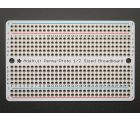



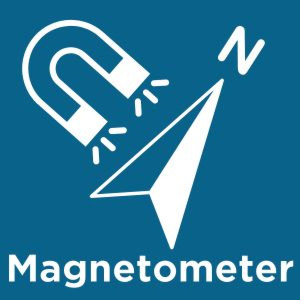
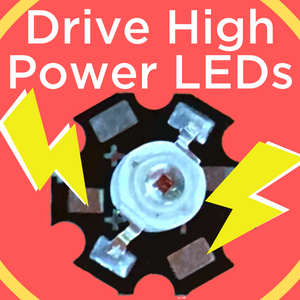


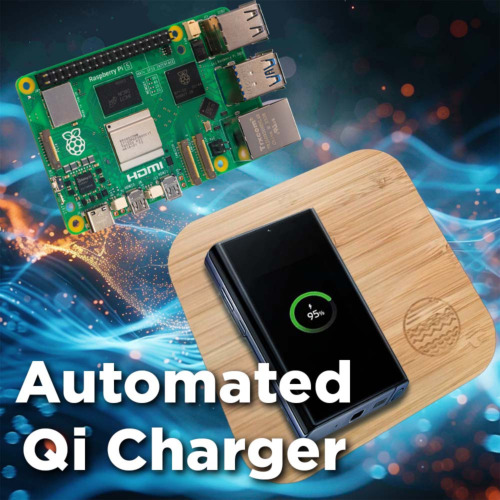
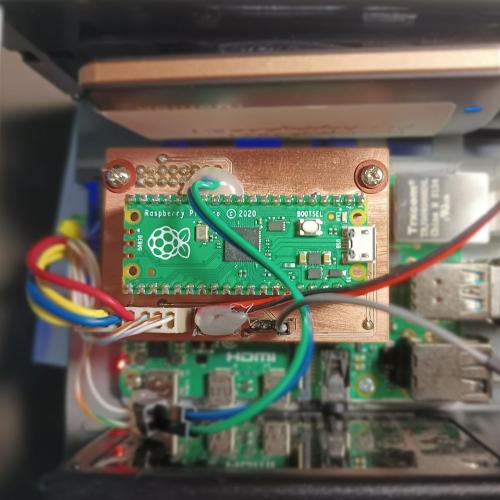


Product Comments